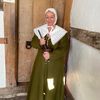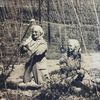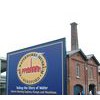
Our small, independent museum is located in the centre of Great Malvern, within 5 minutes walk of Malvern Priory and the Tourist Information Centre. The museum is a registered charity, and is run entirely by enthusiastic and friendly volunteers. Malvern Museum Society was formed in 1978. The role of the Society includes protecting the museum's legal and charitable status, its property and long-term interests.
Since 1980 it has been responsible for the ancient Priory Gatehouse. The Gatehouse has benefitted from two restoration programmes since 1980 when stonework, roof and windows were repaired. In 2012 the Society began another major programme of conservation and repair. This body began life as the Museum Association but the present title better reflects its role.
Since 1980 it has been responsible for the ancient Priory Gatehouse. The Gatehouse has benefitted from two restoration programmes since 1980 when stonework, roof and windows were repaired. In 2012 the Society began another major programme of conservation and repair. This body began life as the Museum Association but the present title better reflects its role.
Services
Malvern Hills Room - This includes the development of the Priory Gatehouse. You can appreciate how the geology of the area has contributed to the later history of Malvern. Medieval Room - Here you can follow the arrival of the Benedictine monks and the building of Malvern's two priories. Would you have liked to live in Malvern's Royal Forest or Chase?
This room has much to offer and families can find out what it was like to live in medieval Malvern. Children can dress up as monks or peasants and all ages can have a go at building Hanley Castle or arranging medieval tiles in the right sequence. Malvern did not exist at the time of the Norman Conquest 1066.
There are some fine collections and a number of display boards along the upstairs corridor. The window frames from the Guesten Hall take pride of place and clearly demonstrate the skills of the medieval carpenter. Other maps provide information about the local area in the 1700s and key routes through Worcestershire.
Malvern was no more than a village of 3,000 inhabitants in 1831 when Princess Victoria visited the area. By the time Queen Victoria died, the population was nearer 16,000. Growth on this scale can be explained by the arrival of the two Water Cure doctors in 1842. Their reputation spread quickly and very soon Malvern became a health resort in the same league as Cheltenham, Tunbridge Wells and Leamington Spa.
Even at the turn of the twentieth century Malvern was making history. Malvern's engineering success began in 1894 when the Santler brothers of Malvern Link produced the Malvernia, what is thought to be the first four wheeled petrol driven British motor car. Production of the Morgan car began in here in 1910 and it still enjoys a worldwide following.




